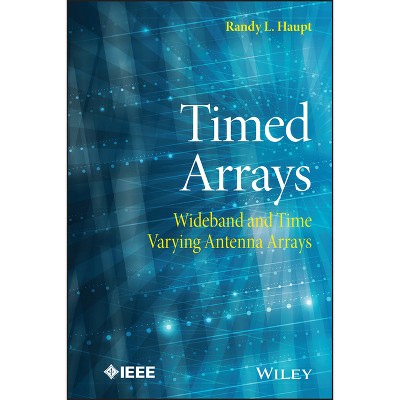Performance Evaluation and Design of Flight Vehicle Control Systems - by Eric T Falangas (Hardcover)

About this item
Highlights
- The purpose of this book is to assist analysts, engineers, and students toward developing dynamic models, and analyzing the control of flight vehicles with various blended features comprising aircraft, launch vehicles, reentry vehicles, missiles and aircraft.
- About the Author: Eric T. Falangas was a Lead Engineer/ Specialist and Project Manager at Boeing, Rockwell International and Aerospace Corporation in the fields of flight control design, spacecraft attitude control, vibration control and active vibration isolation, and other control and dynamics related projects.
- 432 Pages
- Technology, Aeronautics & Astronautics
Description
Book Synopsis
The purpose of this book is to assist analysts, engineers, and students toward developing dynamic models, and analyzing the control of flight vehicles with various blended features comprising aircraft, launch vehicles, reentry vehicles, missiles and aircraft.- Graphical methods for analysing vehicle performance
- Methods for trimming deflections of a vehicle that has multiple types of effectors
- Presents a parameters used for speedily evaluating the performance, stability, and controllability of a new flight vehicle concept along a trajectory or with fixed flight conditions
From the Back Cover
This book will help students, control engineers and flight dynamics analysts to model and conduct sophisticated and systemic analyses of early flight vehicle designs controlled with multiple types of effectors and to design and evaluate new vehicle concepts in terms of satisfying mission and performance goals.
Performance Evaluation and Design of Flight Vehicle Control Systems begins by creating a dynamic model of a generic flight vehicle that includes a range of elements from airplanes and launch vehicles to re-entry vehicles and spacecraft. The models may include dynamic effects dealing with structural flexibility, as well as dynamic coupling between structures and actuators, propellant sloshing, and aeroelasticity, and they are typically used for control analysis and design. The book shows how to efficiently combine different types of effectors together, such as aero-surfaces, TVC, throttling engines and RCS, to operate as a system by developing a mixing logic matrix. Methods of trimming a vehicle controlled by multiple effectors are presented for calculating the effector positions required to balance the vehicle moments and forces. Flight vehicle performance, stability, and controllability are also evaluated along a trajectory in terms of performance parameters and by means of vector diagrams and contour plots. The book concludes with control design examples of two flight vehicles and a space station, accompanied by graphical methods for analysing vehicle performance.
This book also presents:
- Adjustable equations of motion for various types of vehicles and modeling complexities
- Mixing-Logic Algorithms for optimally combining different types of control effectors
- Algorithms for developing dynamic models used to analyze system robustness
- Control Design Methodologies and Algorithms
This book presents a unified approach in modeling, effector trimming, and combining multiple types of flight vehicle control effectors.
About the Author
Eric T. Falangas was a Lead Engineer/ Specialist and Project Manager at Boeing, Rockwell International and Aerospace Corporation in the fields of flight control design, spacecraft attitude control, vibration control and active vibration isolation, and other control and dynamics related projects. He received a BS in Electrical Engineering from the University of London and a MS in Control Systems from the University of Manchester Institute of Science and Technology. Eric has published several papers in magazines and conferences and was awarded 4 patents for developing active vibration control systems using piezo-electric actuator devices, and Flixan, which is a flight vehicle modelling and performance evaluation methodology, implemented in a Windows based program.Shipping details
Return details
Trending Non-Fiction











